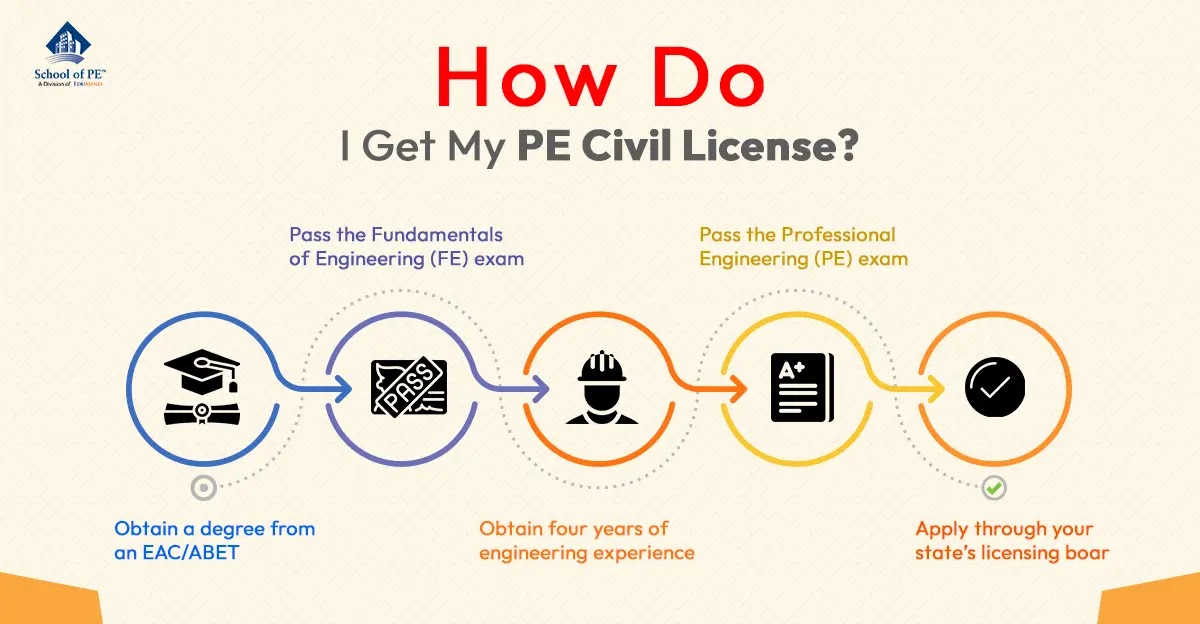History of Professional Licensure
If we go back to the history of professional work, we can find that the earliest forms of regulated work through professional licensing were in the Middle Ages, c. 1100 - 1453. Craft guilds in Europe, like the Hanseatic League (Burdick, 2020), gained privileges in form of proclamations, letters of patents, and "Charters" from the monarchs to exclusively practice their trades, which can be credited to be the earliest form of licensing. This form of licensing aided and abetted the monopolization of trade and ensured governmental control on trade revenue. However, at the time, regulating a trade with licensing to ensure public health, safety, and welfare was not a primary purpose.
Doctors Pioneered the Modern Licensing
The concept of legislation that allowed only licensed professionals to practice is traced back in the historical records to a decree made by King Roger of Normandy in 1140 AD. This decree required doctors to present a "proof of competency" to practice on the public (Ref. 3).
As many as four hundred years later, Dr. Thomas Linacre determined this proof of competency fulfilled by passing an examination by a group of peers.
In 1509, King Henry VIII appointed Thomas Linacre as the royal physician. This position garnered considerable influence in the field of medicine. Dr. Linacre used this unique position of power to deliver the most important service to the society of professionals by founding the royal charter of the College of Physicians in London, later known as the Royal College of Physicians of London (RCP).
The RCP was established in 1518. It was affirmed and its powers were extended beyond London to the whole of England by the Act of Parliament in 1523. It became the British professional membership body dedicated to improving practice of medicine, primarily through the accreditation of physicians-their knowledge to be ratified through examination.
The RCP granted licenses to those qualified to practice medicine and punished practitioners who were unqualified or engaged in malpractice. The RCP became the first professional body to set the international standards for classification of diseases until the present day, when it was brought under the auspices of the World Health Organization.
Medicine was the first professional occupation that ensured only qualified and competent professionals would practice. It is the exclusive forbearer of professional licensing in the modern era, and its licensure standards have saved countless lives.
What is a professional engineer* and how is the role different from an engineer?
An engineer is someone who has graduated from an accredited engineering program, while a professional engineer (PE) is someone who has completed their education in an engineering field, accumulated engineering experience, and passed the discipline-specific Principles and Practice of Engineering Exam administered by the National Council of Examiners for Engineering and Surveying (NCEES). For engineers, licensure is mandatory to submit plans to a public authority for approval, to work as a consultant, or to be in responsible charge of engineering work.
PEs are bound to a code of ethics and uphold the highest standards of honesty and integrity. The National Society of Professional Engineers' (NSPE) Code of Ethics notes that a PE should hold paramount the safety, health, and welfare of the public. PEs shall perform services only in their areas of competence and set forth a conduct that is honorable, responsible, and lawful.
In the United States, the practice of professional engineering is highly regulated, and the title "professional engineer" is legally protected. It is unlawful to use it to offer engineering services to the public unless formally endorsed by the state through a professional engineering license.
David Steinmann, PE, NSPE founder, past president of NCEES, renowned builder of suspension bridges, and one of the strongest advocates of PEs sums up the importance of the PE all with this statement: "Engineers' registration laws are, of course, necessary for the safety of the public...but they are also necessary for the protection of the good name of the profession."
*In the regards of the USA.
The Historical Path to a Professional Engineer
Ancient Times
The existence of laws with respect to engineering goes back to ancient times (i.e., 1800 BC) to the famous and strict Code of King Hammurabi of Babylon. Hammurabi's Code, though harsh, only punished unlicensed practitioners if their work killed someone. In other words, an unlicensed practitioner could practice, but bore no consequences unless they harmed someone.
Through the End of the 19th Century: First Engineering License Provided in USA
After licensure requirements were established for doctors to practice professionally, other professions followed suit and by the 19th century, barbers, embalmers, ferry operators, horseshoers, pawnbrokers, and land surveyors required licenses to practice their trade (Larkin, 2017, McGuirt, 2007). It was as late as the dawn of the 20th century that saw formal activity in the licensure of engineers...and it started in the Wild West of Wyoming, USA (McGuirt, 2007).
The Modern Era of Professional Licensing
20th Century (1907 - 1919): First 10 States Begin Registering Engineers
In 1907, Wyoming engineer Charles Johnston put forth legislation requiring the registration of engineers that established clear guidelines on who could and could not practice engineering in the state. This would prevent untrained and unqualified folks from dabbling in important work meant to be performed only by educated engineers and surveyors.
Charles Johnston's legislation, in addition to requiring the registration of engineers or surveyors who sought to market themselves to the public, created the state board of examiners for the profession. Charles Bellamy, another Wyoming engineer and mineral surveyor holds the distinction of becoming the first licensed engineer in the US.
This landmark legislation laid the path for the state of Louisiana to pass their own engineering registration law, and by 1919, the states of Florida, Illinois, Iowa, Colorado, Michigan, Idaho, Nevada, and Oregon had all passed legislation to not only require registration but also establish state boards.
1920s: Inter-State Standardization of Engineering Licensure
With each state board taking up the reins of registering its engineers, the problem of out-of-state acceptance of engineer registrations arose, and in 1920, the Iowa State Board of Engineering Examiners in collaboration with the several other state boards created "an organized and systemized method of procedure to be followed in interstate registration to standardize the inter-state registration of engineers."
Eventually, the Council of State Boards of Engineering Examiners (CSBEE) was founded-the precursor to NCEES. A new written constitution was drafted, making the CSBEE a "permanent organization" and ensuring practical uniformity in professional engineering practice as well as reciprocal interstate relations within the engineering profession.
1930s: Strengthening and "Nationalization" of Professional Engineering
In 1932, The NCEES created and ratified the Model Law for the Registration of Professional Engineers and Land Surveyors. In addition to establishing licensing guidelines for the state boards, this law established record-keeping procedures with the creation of the National Bureau of Engineering Registration, designed to assist engineers needing to work in different states.
The National Society of Professional Engineers (NSPE) was founded by bridge engineer David Steinmann in 1934. This society would soon become dedicated to the engineering profession's nontechnical concerns. The NSPE focuses on legislative issues, public understanding and recognition for the profession, adequate compensation, and ethical practice.
By 1939, as many as 47 states and one territory were licensing engineers, and the National Council was ready to take on major problems in the engineering profession. Executive Secretary T. Keith Legare stated that the Council had become "the logical organization to advise and furnish reliable information to the state groups that are promoting the adoption of new registration laws or amendments to existing laws."
1940s: The Last State Standing
In 1947, Montana, the last state to offer engineering licensure standards, enacted its engineering licensure law, and by 1950, the entire country including the District of Columbia had some form of engineering licensure law in effect.
The NCEES was divided into four directional zones and John Remington Jr. of New Jersey became the first president of NCEES.
1950s: Examination - the Third "E" of PE (Education, Experience and Examination)
In 1953, the NCEES' Subcommittee on Written Examinations issued the exam syllabus among the state boards.
In 1958, the NCEES saw the first woman appear as a discussant at its annual meeting: Ms. Clemmie Wall of the Missouri Board participated in the presentation of the State Board Secretaries Conference.
1960: Administering the Engineering Licensure Examination
In 1961, the Northeast Zone led the way by administering the first uniform professional exam. This was a significant milestone for homogeneity and overall inter-state mobility efforts.
In 1965, the first Fundamentals of Engineering (FE) exam was offered. The widespread use of the FE exam was an immediate aid to the state boards for reciprocity. A year later in 1966, the first Principles and Practice of Engineering (PE) exam was administered.
1970s: Centralizing the Professional Data of Engineers
In 1979, the Council replaced the National Bureau of Engineering Registration with the NCEES Records Program, which would become "the central depository of official documentary and personal biodata of all types of engineers."
1980s: Maintaining Uniformity in Examinations
By 1984, all engineering licensing boards were using uniform national engineering exams, and the NCEES went from a norm-referenced method to a criterion-referenced method to determine the minimum passing score for the PE exam. The NCEES focused on strategic plans to shape the future of professional licensure.
1990s: Examination Format Changes
In 1996, PE exams, except for the Structural exam, were voted to be multiple-choice to improve scoring reliability and consistency. FE exams were offered in six discipline-specific modules.
In 1999, Computer-Based Testing (CBT) became the format of the exam.
2000s: Helping State Boards with Examinations and Internationalization
In 2000, the Exam Administration Services department was formed within the NCEES to bring state boards uniformity in conducting examinations. In 2003, a task force reached out to students and educators for feedback with the goal of increasing their awareness of the FE exam.
In 2005, the NCEES created a Credentials Evaluations service, which put in place a uniform, transparent, and reliable system for evaluating foreign-educated candidates and domestic candidates of non-ABET accredited programs seeking professional licensure in the US.
In 2007, the NCEES expanded its international presence by administrating the FE and PE exams first in Japan, then in seven other countries.
2010: Diversifying the Organization and the Examination Processes
In 2010, the NCEES focused on professional engineering licensure for faculty.
In 2013, the NCEES added two new departments-Client Services and Member Services-to increase services for customers and boards. Patty Mamola, PE of Nevada was elected as the first and only woman president of the NCEES in 2013-14.
In January 2014, FE exams were first administered via CBT. The move to CBT allowed for more uniform testing conditions, stronger security for exam content, and greater scheduling flexibility.
2020 - The Centennial Year
2020 marked the 100th anniversary of NCEES!
Conclusion
Although professional engineering licensure had a relatively late start in comparison to other professions, it has evolved into a mature and effective process thanks to incremental yet meaningful progress over the past century as well as its ability to adapt to changes over time.
References
1. Burdick, C; History of Professional Licensure, January 2, 2020.
2. Larkin, Jr, P. J; Legal Memorandum No. 204; A Brief History of Occupational Licensing, http://report.heritage.org/lm204, May 23, 2017.
3. McGuirt, D; The Professional Engineering; National Society of Professional Engineers, May 2007.
4. NCEES, Developments in Licensure - Timeline; Celebrating 100 years of NCEES, November 2020.
About the Author: Surajit Amrit
Surajit Amrit has a 30+ year career as a practicing engineer at Engineering News Record (ENR)-ranked engineering firms. He has a bachelor's degree from Indian Institute of Technology and a master's degree from Vanderbilt University. He is a licensed PE, Certified Energy Manager (CEM®) and LEED® AP. He is currently pursuing his CVS certification (Value Engineering - SAVE International). In his spare-time he enjoys reading books, listening to political satire, trail walking, and dabbling in trivia, jigsaw puzzles and numismatics.



